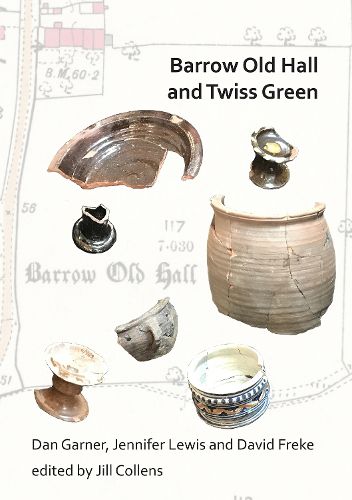Readings Newsletter
Become a Readings Member to make your shopping experience even easier.
Sign in or sign up for free!
You’re not far away from qualifying for FREE standard shipping within Australia
You’ve qualified for FREE standard shipping within Australia
The cart is loading…






Excavations were carried out at the moated sites of Barrow Old Hall and Twiss Green, in Warrington, North West England, in the 1980s. Sub-manorial estates were established at these two sites by the fourteenth century, located near the boundaries of their multi-moated townships. Townships with multiple moats were a feature of parts of North West England and may have been the result of medieval assarting and the expansion of agriculture on to fringe or marginal areas, on the boundaries of earlier manors. It also owed much to the unusual tenurial arrangements of the region, whereby lords granted small estates out of their holdings, often to family members, to construct moated homesteads. This report presents the results of the excavations at these two small moated sites, including evidence for possible aisled halls at both sites, as well as a significant assemblage of medieval and early post-medieval pottery. There is also a full account of the finding of the remains of a timber bridge at Twiss Green and its full reconstruction; an illustration of which was previously published in the Shire Archaeology series book on Moated Sites in 1985. The publication of these excavations contributes to a more comprehensive understanding of the role and development of moated sites in this part of North West England and completes the outstanding analysis of moated sites excavated in the Warrington area.
$9.00 standard shipping within Australia
FREE standard shipping within Australia for orders over $100.00
Express & International shipping calculated at checkout
Excavations were carried out at the moated sites of Barrow Old Hall and Twiss Green, in Warrington, North West England, in the 1980s. Sub-manorial estates were established at these two sites by the fourteenth century, located near the boundaries of their multi-moated townships. Townships with multiple moats were a feature of parts of North West England and may have been the result of medieval assarting and the expansion of agriculture on to fringe or marginal areas, on the boundaries of earlier manors. It also owed much to the unusual tenurial arrangements of the region, whereby lords granted small estates out of their holdings, often to family members, to construct moated homesteads. This report presents the results of the excavations at these two small moated sites, including evidence for possible aisled halls at both sites, as well as a significant assemblage of medieval and early post-medieval pottery. There is also a full account of the finding of the remains of a timber bridge at Twiss Green and its full reconstruction; an illustration of which was previously published in the Shire Archaeology series book on Moated Sites in 1985. The publication of these excavations contributes to a more comprehensive understanding of the role and development of moated sites in this part of North West England and completes the outstanding analysis of moated sites excavated in the Warrington area.